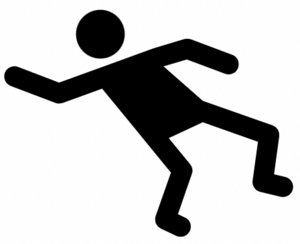An Unbiased View of Dementia Fall Risk
Table of ContentsRumored Buzz on Dementia Fall RiskNot known Facts About Dementia Fall RiskDementia Fall Risk Fundamentals ExplainedDementia Fall Risk Things To Know Before You Get ThisThe 4-Minute Rule for Dementia Fall Risk
Guarantee that there is a marked location in your clinical charting system where team can document/reference ratings and document relevant notes related to drop prevention. The Johns Hopkins Fall Danger Evaluation Device is one of many tools your team can utilize to help avoid unfavorable clinical occasions.Individual drops in medical facilities are common and debilitating damaging occasions that persist in spite of decades of effort to decrease them. Improving interaction across the assessing registered nurse, care group, individual, and individual's most included good friends and household might enhance fall avoidance initiatives. A team at Brigham and Female's Health center in Boston, Massachusetts, sought to develop a standard autumn prevention program that focused around improved interaction and client and family members interaction.

The innovation team emphasized that effective execution depends on individual and personnel buy-in, assimilation of the program right into existing process, and integrity to program procedures. The group noted that they are facing just how to make certain continuity in program application throughout durations of crisis. During the COVID-19 pandemic, for instance, a boost in inpatient drops was connected with limitations in patient interaction together with restrictions on visitation.
A Biased View of Dementia Fall Risk
These cases are commonly taken into consideration preventable. To apply the intervention, organizations need the following: Access to Fall TIPS resources Autumn pointers training and re-training for nursing and non-nursing team, including brand-new registered nurses Nursing workflows that permit patient and family members involvement to conduct the drops analysis, ensure use the prevention strategy, and conduct patient-level audits.
The outcomes can be highly detrimental, usually increasing individual decline and triggering longer hospital remains. One research estimated remains increased an additional 12 in-patient days after a person autumn. The Autumn TIPS Program is based on appealing individuals and their family/loved ones throughout 3 primary processes: evaluation, individualized preventative treatments, and bookkeeping to ensure that people are engaged in the three-step autumn prevention process.
The individual assessment is based upon the Morse Fall Range, which is a validated fall risk analysis device for in-patient healthcare facility settings. The range consists of the 6 most typical factors clients in healthcare facilities fall: the person autumn background, high-risk conditions (including polypharmacy), usage of IVs and other outside tools, psychological standing, stride, and wheelchair.
Each risk factor relate to one or even more workable this evidence-based treatments. The registered nurse produces a plan that incorporates the interventions and shows up to the care team, patient, and family members on a laminated poster or published aesthetic help. Nurses create the strategy while meeting the client and the client's household.
The Buzz on Dementia Fall Risk
The poster works as a communication tool with various other participants of the person's care group. Dementia Fall Risk. The audit element of the program includes examining the patient's expertise of their risk variables and prevention plan at the device and health center degrees. Nurse champions carry out a minimum of five specific interviews a month with clients and their families to look for understanding of the loss prevention strategy
.png)
An estimated 30% of these drops cause injuries, which can range in seriousness. Unlike other unfavorable events that need a standardized scientific response, fall avoidance depends extremely on the needs of the client. Read More Here Consisting of the input of individuals that recognize the patient best enables better customization. This technique has proven to be much more reliable than autumn prevention programs that are based primarily on the production of a risk score and/or are not customizable.
10 Simple Techniques For Dementia Fall Risk

Based on auditing results, one website had 86% compliance and 2 websites had more than 95% conformity. A cost-benefit evaluation of the Loss pointers program in eight healthcare facilities estimated that the program price $0.88 per patient to implement and caused financial savings of $8,500 per 1000 patient-days in direct expenses connected to the avoidance of 567 falls over 3 years and 8 months.
According to the development group, companies interested in applying the program ought to perform a readiness analysis and falls prevention voids analysis. 8 In addition, organizations should make sure the necessary facilities and workflows for application and create an application plan. If one exists, the organization's Loss Avoidance Job Pressure need to be associated with preparation.
Some Of Dementia Fall Risk
To begin, companies need to guarantee completion of training components by nurses and nursing assistants - Dementia Fall Risk. Hospital staff ought to analyze, based upon the needs of a medical facility, whether to utilize an electronic health and wellness record printout or paper version of the autumn prevention strategy. Carrying out groups need to hire and educate why not find out more registered nurse champions and establish processes for auditing and reporting on fall data
Staff need to be included in the procedure of upgrading the operations to involve people and family members in the assessment and avoidance strategy procedure. Systems needs to be in area to ensure that devices can recognize why a loss happened and remediate the reason. A lot more especially, registered nurses need to have networks to supply continuous comments to both personnel and unit leadership so they can adjust and boost autumn prevention operations and communicate systemic problems.